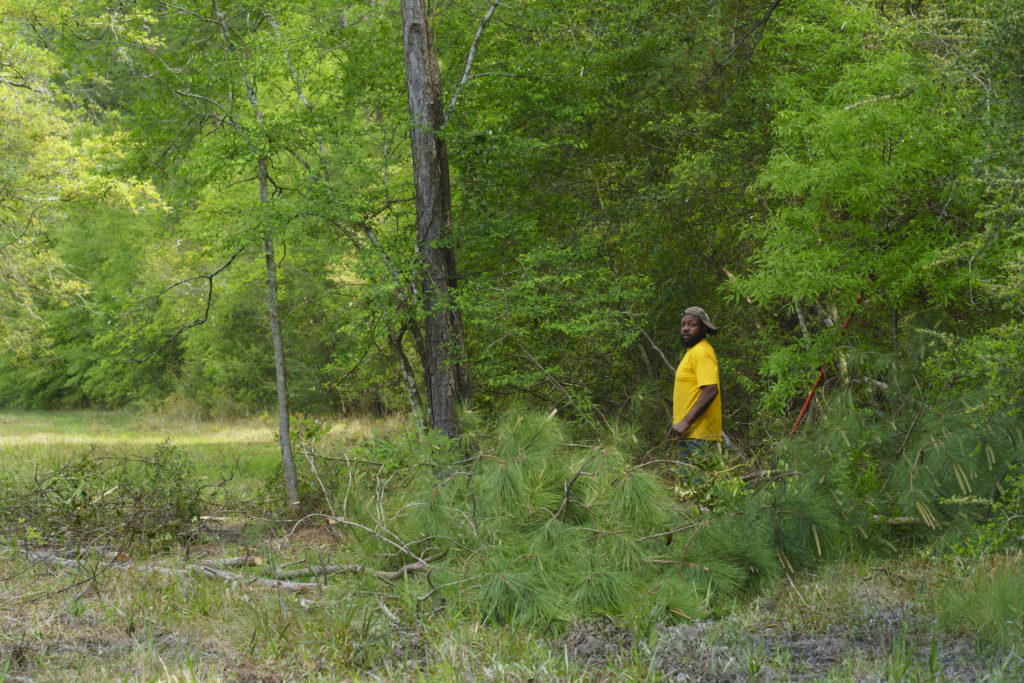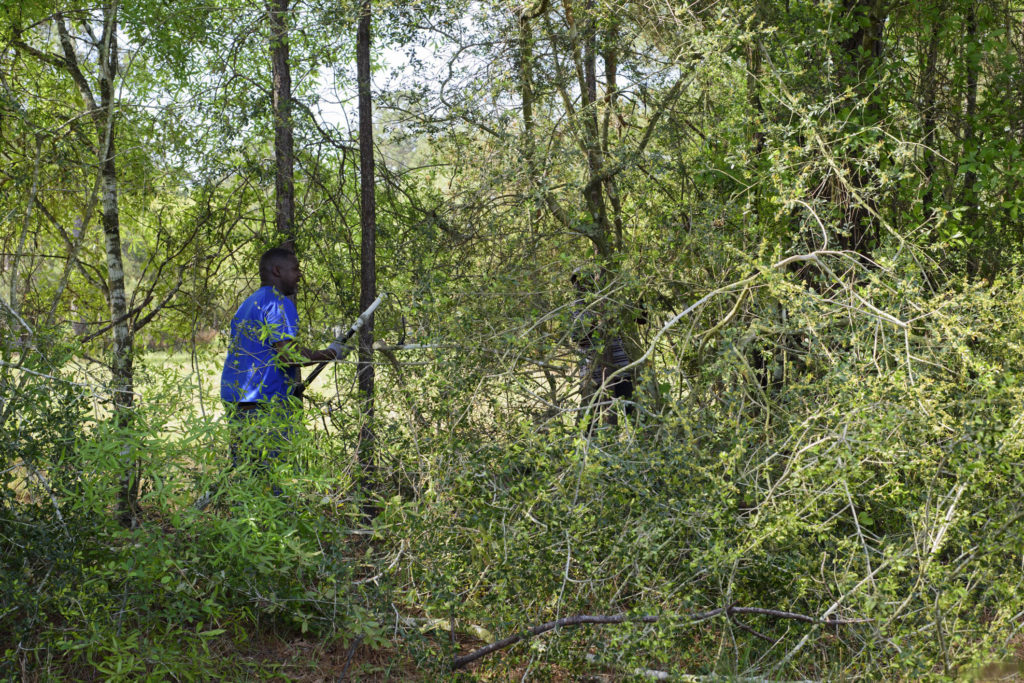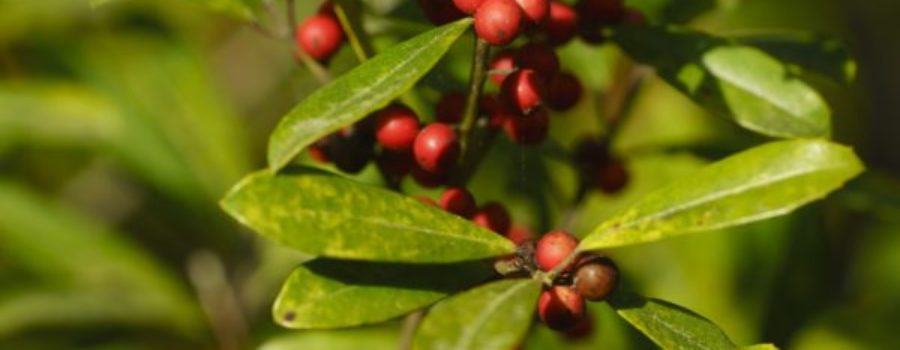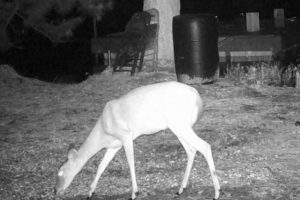Clearing Brush and Saving a Holly
An old fence line cut though the middle of a meadow dividing it for no apparent reason. Once it was useful to a farmer who kept his horses out of a crop, but today its barbed wire and posts are lying on the ground and only yaupon, wax myrtles and tallow trees stand among some tall, old loblollys and slash saplings covered with Greenbrier and Virginia Creeper—or so it seems.
In the far east corner of this row a 15-foot Dahoon Holly, Ilex cassine was discovered. How it got there nobody knows, but its beautiful reddish orange berries gave away its hiding spot over the winter and convinced us it was time to set it free. With the meadow still in standing water from a week of rain, we descended on this fence row armed with chain saws, an axe, lopping shears, an electric weed whacker, a generator, gloves, rakes, a fence tool and a hammer. Immediately, the 4-wheel drive Jeep got stuck in the mud; then the big blue tractor that came to pull it out. Both were finally rescued by the 1959 Ferguson tractor.


Two days later and just before another torrential overnight storm, the holly is free and able to spread its limbs. When the field is dry enough to get the tractor in, we’ll push all the debris together and add it to an existing brush pile where birds, rabbits and others will find a comfortable new home.
The little holly is able to breathe now and get some sun on its leaves. Soon it will be in flower and in the meantime we’ll look for its mate. Hollies are either male or female. The female needs a male holly in order to make berries so we know there’s one around somewhere. We just have to find where it’s hiding.
Dahoon hollies make excellent landscaping plants that usually grow no more than 30 feet tall in a pyramidal shape, maybe 12 feet wide. Its leaves are smooth, dark green, and shiny with only a few serrations at the top. The species is native to the coastal southeast from Virginia to southeast Texas. Dahoons grow well in full or partial sun as long as the soil is moist, even boggy like our meadow. Its red-orange berries in fall and winter attract cedar waxwings, mockingbirds, robins and other fruit and seed-eating birds. It’s a fine tree to have.





Recent Comments